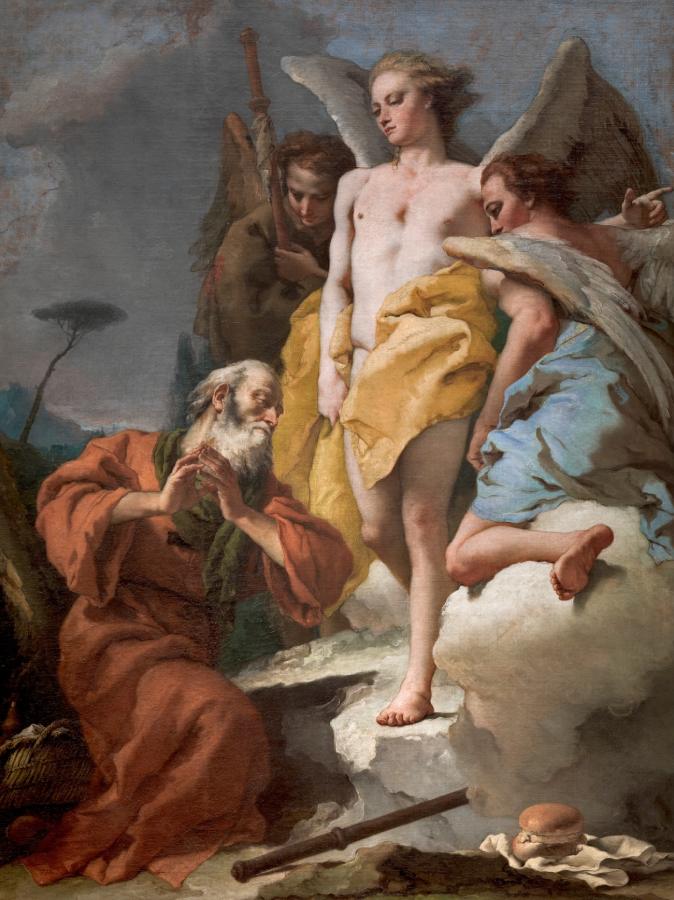Tiepolo, Giambattista (1696-1770)
Abramo e i tre angeli (Abraham and the three angels)
c.1770
Oil on canvas, 196 x 151 cm
Museo del Prado, Madrid
This painting presents an event mentioned in the book of Genesis (18, 1.19). Giambattista Tiepolo had depicted this subject earlier in a painting from the series he painted for the palace of the Archbishop of Udine in 1726. Here, however, it is presented in a more modern manner, with a contained equilibrium among all parts of the composition and a harmonious coexistence of neoclassical values with others marked by a curious pre-Romantic spirit.
This work’s formal type and the basic principles of its style indicate that it was painted towards the end of the artist’s life, possibly at the same time as his paintings for the church of San Pascual in Aranjuez, whose first sketches were made in late August, 1767. Curiously, some aspects reflect the esthetic of Anton Raphael Mengs, a young and more modern painter who was Tiepolo’s competitor at the court in Madrid. Not only does the present work recall the formulas employed in the definitive canvases for the church of San Pascual; it also parallels some of the models used there. That coincidence is especially clear in the imposing angel at the center, whose handsome, arrogant and haughty figure dominates the composition. This angel is extraordinarily similar to the one bearing the Host that presides the now fragmented depiction of Saint Paschal Baylon Worshiping the Holy Sacrament from the series in Aranjuez, which also belongs to the Museo del Prado (P364). A sketch of this latter work is at the Courtauld Institute in London.
Abraham is shown in a worshipful posture before the miracle that has taken place in his own house: the angels who have come to announce that his aged wife, Sarah, will soon conceive a son. As such, he is one of a series of old men with long beards that people Tiepolo’s works. Both Abraham’s posture and that of the other two angels are dynamic, contrasting with the solemnly hieratic stance of the angel who occupies the most outstanding position in the group. The background is interesting for its severe character and the peculiar still life formed by the objects in the lower right corner.
The origin of this work is unknown. It was first mentioned in print in 1942, twenty-eight years after it was donated to the Museo del Prado by the Sainz family. Nothing is known of its earlier history. Consequently, it seems possible that it may originally have been painted for a chapel, possibly part of a religious foundation, or a private prayer chapel belonging to an aristocratic or bourgeois family linked to court circles (Text drawn from Luna, J. J.: El Prado en el Ermitage, Museo Nacional del Prado, 2011, pp. 172-173).
